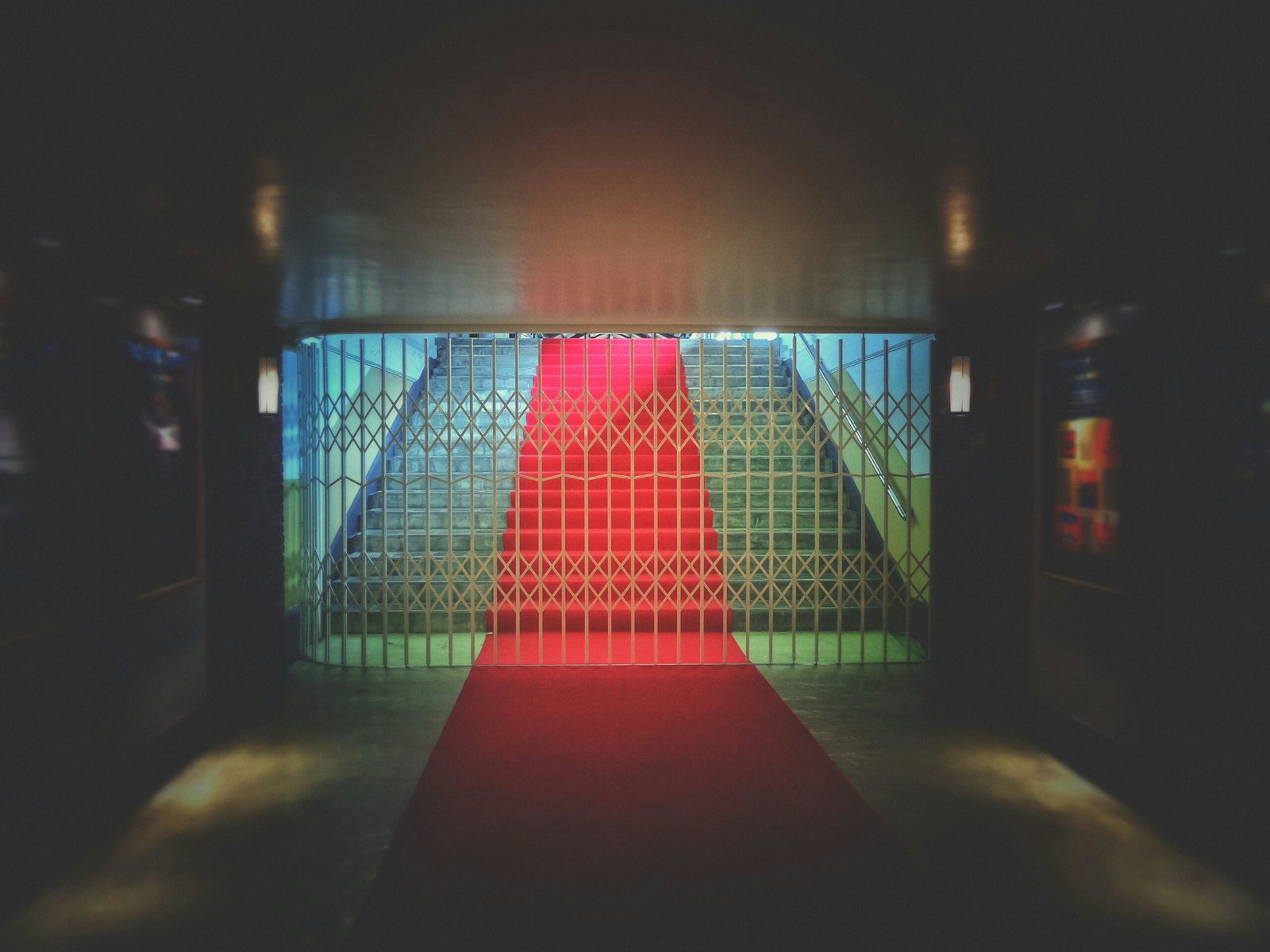
Red carpet events have transcended from mere glamorous gatherings into vital showcases of high fashion, influencing global style trends. Originating in the early 1900s, red carpet fashion has evolved into a highly anticipated spectacle, drawing attention not just to the celebrities in attendance but also to the groundbreaking designs they flaunt. These events frequently serve as a barometer for upcoming fashion trends, as designers and celebrities collaborate to present avant-garde and haute couture creations that captivate audiences worldwide.
The historical progression of red carpet fashion offers a fascinating glimpse into the shifting paradigms of style and societal values. Early red carpet appearances were relatively understated, focusing on elegant yet conservative attire. However, as the 20th century progressed, the world witnessed a marked shift towards more daring and inventive fashion statements. This evolution was fueled in part by the growing influence of the entertainment industry, which thrust celebrities into the limelight and turned red carpet events into major cultural milestones.
In contemporary times, the symbiotic relationship between celebrities and designers has become more pronounced. Celebrities rely on the creative genius of designers to make bold fashion statements, while designers leverage these high-visibility platforms to display their most innovative and intricate works. The red carpet thus functions as a dynamic fusion of star power and sartorial artistry, setting the tone for the fashion industry as a whole.
Moreover, these events play a crucial role in reinforcing the importance of haute couture within popular culture. Red carpet appearances often spark global conversations about style, with millions of viewers and fashion enthusiasts eagerly analyzing every aspect of the showcased outfits. As a result, red carpet fashion not only shapes public perceptions of beauty and elegance but also underscores the creative synergy vital to the haute couture industry.
This introduction sets the stage for a deeper exploration of red carpet fashion, highlighting its significance within both the haute couture industry and the broader cultural landscape. The enduring allure of red carpet events lies in their ability to merge celebrity influence with fashion innovation, making them pivotal in the ongoing evolution of global style.
Iconic Red Carpet Moments and Looks
Red carpet events are the epitome of glamour and fashion, serving as a platform where celebrities showcase iconic styles that leave an indelible mark on fashion history. One such moment was Angelina Jolie’s appearance at the 2012 Oscars, where she wore a stunning Atelier Versace black velvet gown. The gown’s bold slit offered a dramatic silhouette, accentuating Jolie’s statuesque figure. This look not only sparked fashion discussions but also became a viral sensation, influencing future red carpet trends towards daring yet elegant designs.
Similarly, at the 2015 Met Gala, Rihanna made headlines with a spectacular ensemble designed by Guo Pei. The canary-yellow gown, featuring intricate embroidery and an extensive train, stood out for its opulence and craftsmanship. Rihanna’s choice honored Chinese couture and created a buzz around traditional and contemporary fashion fusion, leaving an enduring influence on gala themes and celebrity choices for future events.
Lupita Nyong’o’s 2014 Oscars gown by Prada deserves mention as an iconic look that conveyed both simplicity and sophistication. The ethereal blue hue of her dress, inspired by Nairobi skies, and its flowing, pleated design captured the attention of fashion critics and fans alike. This outfit highlighted the emerging trend of personalization in red carpet attire, where celebrities sought to tell a story through their sartorial choices.
The 2019 Cannes Film Festival saw Elle Fanning channeling old Hollywood glamour in a Dior Haute Couture ensemble. The blush-colored organza ballgown, complete with a voluminous skirt and delicate floral appliqués, showcased the timeless appeal of classic silhouettes. Such looks remind us of the continuous interplay between past and present fashion, influencing style narratives globally.
Moreover, Billy Porter’s 2019 Oscars appearance, wearing a custom Christian Siriano tuxedo gown, broke conventional gender norms and sparked discussions on fashion’s role in social commentary. This audacious look, combining a tailored tuxedo with a voluminous skirt, highlighted the evolving definition of elegance and inclusivity on the red carpet.
These memorable moments not only set sartorial benchmarks but also reflected broader cultural shifts. They demonstrate that red carpet fashion is far more than a display of designer labels—it’s a storytelling medium that captures the spirit of its time and continues to inspire fashion aficionados around the world.
Behind the Scenes: The Creation of Red Carpet Fashion
The journey behind crafting red carpet fashion is a meticulous and intricate process, demanding collaboration among celebrities, stylists, designers, and luxury brands. At the heart of this endeavor lies a symbiotic relationship between creativity and precision.
The creation of red carpet outfits often begins with an ideation phase, where stylists and designers consult with their clients to understand their preferences and the vision for the event. This early phase involves brainstorming sessions and conceptual meetings to set the tone for the attire. Designers then transform these ideas into design sketches, visual blueprints that capture the essence of the initial vision.
Fabric selection is another crucial stage in the process, demanding a keen eye for detail and an understanding of trends and styles. The choice of fabric can significantly influence the final look, dictating the garment’s texture, drape, and overall impact. Once fabrics are sourced, designers move to the intricate phase of assembling these materials into a cohesive masterpiece.
Fittings play a pivotal role in bringing the sketches to life. Multiple fittings ensure that the garment not only fits impeccably but also flatters the client’s physique and aligns with their comfort. This stage often involves back-and-forth adjustments, with new challenges surfacing at each fitting, necessitating a highly adaptive and responsive approach.
Final touches add the essence of elegance to the ensemble, often incorporating bespoke details such as embroidery, beading, or unique embellishments. These elements are meticulously crafted to enhance the garment’s allure and align with the red carpet ethos of sophistication and glamour.
Renowned stylists and designers frequently face logistical and creative challenges, such as tight timelines imposed by event dates or the distinct preferences of high-profile clients. Balancing these demands while maintaining the garment’s artistic integrity requires a blend of skill, experience, and ingenuity.
The behind-the-scenes efforts of curating red carpet fashion are marked by dedication, collaboration, and an unwavering commitment to excellence. It underscores the artistry involved and the intensive labor required to achieve those coveted iconic looks that define red carpet events.
As we look to the future, red carpet fashion is poised for dynamic evolution, characterized by an increasing commitment to sustainability and ethical practices. A significant shift is underway, with numerous designers and celebrities choosing environmentally conscious options such as eco-friendly fabrics, upcycled materials, and zero-waste designs. These initiatives signal not just a fleeting trend but a meaningful movement towards a more responsible fashion industry. This evolution echoes a broader societal shift towards mindful consumption and stewardship of our planet.
At the forefront of these changes are emerging designers who are not only innovative but also deeply committed to ethical fashion. Names like Stella McCartney, known for her initiatives in sustainable luxury fashion, are now being joined by a new wave of talent blending couture with conscientious design. These designers are making an indelible mark on the red carpet, highlighting how fashion can be both beautiful and responsible.
Technology is also playing a transformative role in shaping the future of red carpet events. Virtual fashion shows have become increasingly popular, breaking down geographical barriers and offering unparalleled accessibility. Augmented reality (AR) fittings are another exciting development, allowing for bespoke tailoring experiences that can be conducted from almost anywhere. These advancements not only enhance convenience but also open up new modes of creativity and personalization in fashion.
Digital platforms are set to revolutionize the way we experience red carpet events, creating immersive experiences that go beyond the physical presence of the event. Livestreaming, social media engagement, and interactive digital content are likely to become even more integrated into the red carpet showcase, offering fans a closer and more interactive connection with fashion icons and their ensembles.
Ultimately, while the red carpet will continue to serve as a vital stage for fashion expression and innovation, its future lies in adapting to the changing landscape of the fashion industry. By embracing sustainability, fostering new talent, and harnessing the power of technology, red carpet fashion will not only retain its glamour but also set new standards for the industry at large.


